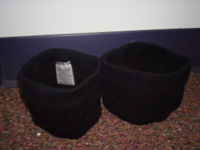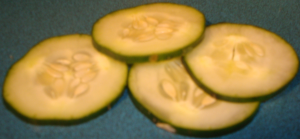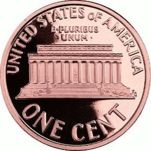Exploring Food with Senses
| Instant wiki maker | Making handouts | Editing tips |
Contents
- 1 Exploring Food with Senses
- 1.1 Student worthiness
- 1.2 Primary biological content area covered
- 1.3 Materials
- 1.4 Handouts
- 1.5 Description of activity
- 1.6 Lesson plan
- 1.7 Potential pitfalls
- 1.8 Art connections
- 1.9 Literature connections
- 1.10 Connections to educational standards
- 1.11 Next steps
- 1.12 Alternatives
- 1.13 Reflections
- 1.14 Citations and links
Biology In Elementary Schools is a Saint Michael's College student project from a course that ran between 2007 and 2010 and fully described in this book chapter. The student-created resources have been preserved here for posterity. Link under 'toolbox' for printer-friendly versions of the exercises. Click on handouts to print full resolution versions. Please see Wikieducator's disclaimer, our safety statement, and the Creative Commons licensing in English and in legalese.
Exploring Food with Senses
Student worthiness
Tried and Trusted
Primary biological content area covered
This experiment explores sight, taste, touch, and smell.
Materials
- Kiwi
- Lemon
- Cucumber
- Shoebox
- Cardboard
- Blindfolds (Figure 1).
- Dixie Cups
- Hand Sanitizer
- Latex-free Rubber Gloves
- Worksheet (to record observations)
- Dissecting Microscope (with video scope: optional)
Handouts
The handout we originally used for this activity did not work as we had planned. This handout (Figure 2) was revised based on what we noticed when the activity was attempted.
Description of activity
In this activity, students will explore the properties of certain fruits and vegetables by using their senses.
Lesson plan
Before Teaching:
1. Print out enough copies of the handout (Figure 1.) for all students.
2. Cut the fruit and vegetables and divide them into cups. (Try to cut them all in the same shape. In this lesson, we used circles.)
3. Designate each fruit or vegetable as 1, 2 or 3 after putting them into cups. Put aside whole fruit that will go into the touch box and fruit that will be placed under the microscope as well.
4. Cover the cups with foil, so students cannot see the food.
5. Put cardboard or paper around the microscope so that the food can only be viewed through the microscope.
While Teaching:
- All teachers should be wearing plastic gloves when handling food.
- Hand sanitizer should also be used when necessary.
1. Students will begin by using their sense of sight. They will be asked to look through a microscope (or at the screen, if available) at the first piece of food. They will draw a picture of what they have seen on the given handout, making sure to draw the appropriate shape and color of the food. (Figure 1). They may also write down a hypothesis of what it is.
2. Next, students will use their sense of touch. They will be blindfolded and and the teacher will place Food 1 in the touch box. After feeling the food, they will then remove their blindfolds and record a new hypothesis on their handout. (Figure 2).
3. Finally, students will use their sense of smell and taste. They will be blindfolded again and given a cup with food in it and be asked to first smell and then taste it. After tasting the food, students will be able to see what it is and write down if they were correct in their guesses. (Figure 2).
Repeat these three steps with the other pieces of food. We used kiwi, lemon and cucumber, but this can be adjusted as necessary.
Potential pitfalls
- We found that many students shouted out the answers as they knew them instead of letting everyone guess themselves. This could be eliminated by having students raise their hands when they have a guess instead of just having to keep it to themselves. This activity could also be made into more of a discussion by letting students share guesses with each other.
- The original handout (Figure 2.) did not work well with first grade students. However, it was clear what went wrong and so the new handout (Figure 1.) that is up should work much better.
- Students sometimes try to peek through their blindfolds. Teachers may have to remind them to keep them on and also to stay in their seats when they are blindfolded to avoid any accidents.
- It may also be helpful to let students play with the microscope either before or after the activity because they are usually very interested in it.
Art connections
Students will draw what they see under the microscope.
Literature connections
Cole,Joanna & Degen,Bruce, 1999, Scholastic's The Magic School Bus Explores the Senses, Scholastic Press
- This would be a great book to read at the end of the experiment after students have had time to explore the food. Students would already have a basic idea of their senses and would be able to understand the information being presented in the book better.
Connections to educational standards
7.1 Students use scientific methods to describe, investigate, and explain phenomena and raise questions in order to:
- Generate alternative explanations - hypotheses - based on observations and prior knowledge
Next steps
- This could be an introduction to a unit on the five senses, as it will catch student attention. Students could discuss when they use each sense and how often they use it during their everyday life using this experiment.
- It could also be used as a lesson on food groups depending on the foods used and the follow-up activities used. For example, this lesson could be done and a teacher could discuss the differences between fruits and vegetables afterwards. Students could discuss what they noticed when using their senses.
Alternatives
The original handouts we used can be found here if anyone would prefer to use it:
Original Handout Page 1
Original Handout Page 2
Reflections
- This experiment ran pretty smoothly. Some pitfalls really depended on the students. I found that some of the students would not focus on the experiment and could only focus on the microscope. Others were very set upon filling out the worksheet and sharing answers instead of exploring their senses. I found it helpful to just remind the students to not focus so much on the sheet and more about what they were experiencing. Also, a very important point is to remind the students that they should not share their answers with the other students. It ruins the experiment.
- Some things worked very well in this experiment. The students seemed to respond well to the microscope and taking a better look at things and also with the blindfolds. They seemed to be very fascinated with the blindfolds (reminder: make sure the students stay in their seats with the blindfolds, this could lead to injury if they start wandering around). Some other really fun things were the reactions the students had to the different foods. The lemon seemed to be a big hit because it has a very sour taste and the students had fun with it.
- Our group put a US penny underneath the microscope and as a fun fact showed that Lincoln is on both sides of the penny. It was a fun intro to the microscope and warmed the students up to working with looking at things under the microscope that they could recognize.
|
|
- I believe the major problem when we ran this experiment was that the handout (Figure 2.) was too confusing for first grade students. It would have worked better with older students, however, the first grade students seemed unsure of where to write and when they should be writing. This took away from exploring their senses. I still think one is needed, but it should be more clear. This way, it will be something they can take away with them and will remind them of their previous guesses instead of getting in the way of exploring their senses.
- The part of the experiment that worked the best was the microscope. The students loved looking at things under it. One thing I would suggest is letting them look at a variety of objects in it either before or after doing the experiment. Doing it before would probably work best because then they can focus more on what food they are seeing and less about their excitement over seeing the microscope for the first time because they will have already explored it. (Above using a penny is mentioned, this is an excellent one to show to students.)
- Since first grade students have difficulty with not shouting out answers, perhaps this experiment would work best if they could have a silent gesture for when they know what the food is or have a guess about what something is, such a giving a thumbs up. This way, they are still sharing that they know something without giving the answer away to other students.
Citations and links
http://education.vermont.gov/new/html/pubs/framework.html Vermont Standards




